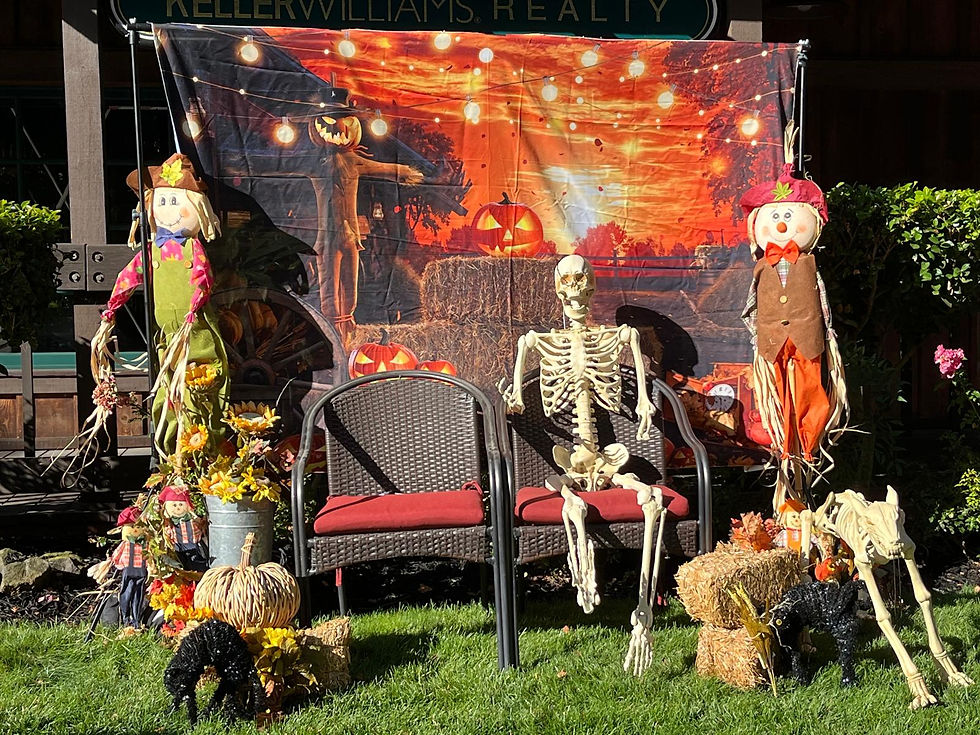12 VEGETABLES AND FLOWERS YOU CAN PLANT OUTSIDE RIGHT NOW—EVEN BEFORE THE LAST FROST
- Krista and Suzie

- Apr 1, 2021
- 3 min read

“In most of the country, late March and early April signify the start to the gardening season,” says Amy Enfield, a horticulturalist for Miracle-Gro. Worried that temperatures may plunge below freezing again and kill your young greenery in a last-gasp frost? It turns out your concerns are unfounded since, Enfield points out, “certain hardy plants and vegetables can withstand chilly nights and late-season frosts.” Which means it's a great time to kick-start your spring garden. In fact, certain vegetables and herbs actually do best when planted in early spring, says Sandra Steineke, director of merchandising at Gurney’s Seed & Nursery. The early planting gives the plants a chance to mature, leading to higher yields and better quality produce. More good news: Vegetables aren’t the only plants that flourish when planted in March and April. Many flowers also perform best in the cooler weather of early spring, since they tend to wither in the hot, dry temperatures of summer. So what exactly should you plant right now? Whether you're planting seeds or established plants, we asked gardening experts to discuss which vegetables and flowers you need to get in the ground now, and some best practices for planting.
Vegetables you can plant in March
Here are the fruits and vegetables you should plant now:
Leafy greens like Swiss chard, spinach, kale, collards, and lettuce
Cole crops such as broccoli, cauliflower, Brussels sprouts, and cabbage
Tuber vegetables, including radishes, beets, turnips, carrots, potatoes, and onions
Asparagus
Rhubarb
Strawberries (Note: Wait to plant them until after the last chance of frost in your region.)
Herbs (“There are several cool-weather herbs like parsley, cilantro, and chives,” says Enfield.)
Flowers you can plant in March
Several types of flowers do their best in the cool weather of early spring, Enfield says. They include the following:
Pansies
Violas
Snapdragons
Sweet William
Sweet alyssum
“Adding them to your garden in March or early April provides an early pop of color, as well as provides beneficial nectar for early-season pollinators,” Enfield says.
Is your soil ready for plants?
No matter what you plant, make sure the soil is ready—and that means unfrozen and dry. “For instance, planting potatoes, onions, or seeds in cold, wet ground that will not dry out for weeks and weeks will cause these items to rot before they sprout,” explains Steineke. If you’re eager to plant but your soil isn’t quite dry, plant flowers and vegetables in containers first, and then transfer them into the ground later.
What happens if you have another frost?
A few warm, sunny days might fool you into thinking winter is over. But a frost or two might still be likely in late March. Many cool season plants can withstand a light frost, Enfield explains.“Semihardy vegetables like beets, carrots, cauliflower, lettuce, Swiss chard, and potatoes will survive light frosts and temperatures down in the upper 20s or low 30s,” she says. “Hardy vegetables like broccoli, Brussels sprouts, cabbage, radishes, spinach, and turnips will survive harder frosts and temperatures down to the low 20s.”
How to protect your plants from frost
To protect your early spring plantings from a cold night or frost threat, cover the plants in the early evening with an old bedsheet, newspapers, or plant cone. Or you can move plants in containers under a covered porch or into a garage. Just don’t forget to remove the coverings in the morning, or they won’t get enough sunlight.
How much to water plants
To keep your plants alive and well, water them about an inch a week. Check your plants for water every few days by sticking your finger into the soil near the plant an inch deep. Water the plants if the soil is dry. If it’s still damp, wait a day or two. “Rain tends to be plentiful in the spring, so you may find you don’t need to water hardly at all,” Enfield says. Fertilize or feed your plants regularly, too, following the instructions on the fertilizer label for how often and how much your plants need. “This will instantly feed your vegetables, flowers, and other plants, and give them the nutrients they need to grow bigger and more beautiful,” Enfield says.
Source: Realtor.com













Comments